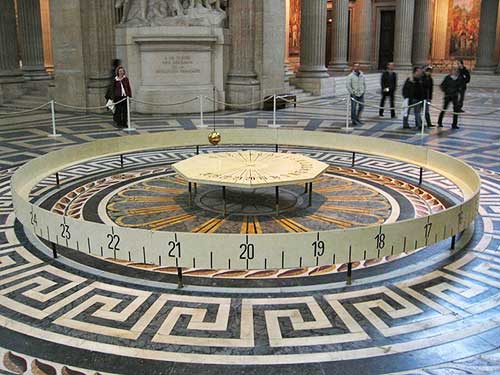The Significance of Foucault's Pendulum
In 1848, Foucault had noticed an interesting
aspect in the behavior of pendulums. When you turn the point
from which the pendulum is hung, the movement of the
pendulum is not disturbed. It wasn't until 1851 that
Foucault would use this to demonstrate the Earths rotation
in the Panthéon in Paris. He hung a 28 kg brass bob from the
ceiling using a 67 m long cable. On the floor, there was a
wooden platform with a layer of sand that the pendulum would
trace its motion in. This made the deflection of its motion
more evident. Foucault had reasoned that the pendulum
appears too be rotating because the Earth is rotating
beneath, while not affecting the pendulums motion. Not only
did this demonstrate the Earth's rotation, but the Coriolis
Effect as well.

Retrieved from
http://ian.umces.edu/blog/2011/03/17/leon-foucault-science-communicator/
The Coriolis Effect is not felt to be the same at all
parts of the world. The effect of the Coriolis effect is
greatest at the poles, and at its least at the equator. This
is why Foucault's pendulum would not work at the equator,
but its motion would experience deflection of the greatest
degree at the poles. Below is a graph showing the effect of
the Earth's spin on the pendulum's motion depending on the
latitude at which the the pendulum is located. At the
equator the pendulum will not be affected at all. At the
South Pole, the pendulum will make a full rotation in the
clockwise direction. At the North Pole, the pendulum makes a
full rotation in the counter clockwise direction. These
transformations take an entire day.
Retrieved from
https://en.wikipedia.org/wiki/Foucault_pendulum
Retrieved from
http://giphy.com/gifs/physics-wikipedia-question-uengWe6C7pnOw
The image above is an example of Foucault's Pendulum at work
and the apparent deflection it goes through.